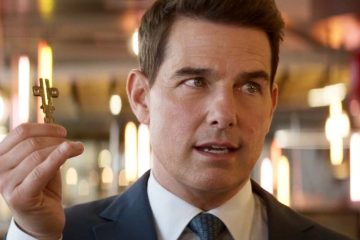Disney has been in a complicated situation over the last few years. The company has switched between leadership a couple of times, and that has led to both stagnation and a sense of unease among the most senior officials in the company. Although there have been highlights in the recent Disney slate, there’s certainly a narrative forming that Disney is becoming creatively stale and is failing to maximize its box office potential. That has been reflected in some of the stats, and audiences are struggling to find a good enough reason to spend so much more heading to cinemas for a House of Mouse flick. Disney has an array of studios to successfully balance, and that sheer variety can become overwhelming and confuse the slate further. Disney+ is becoming a victim of that confusion and complexity.Disney+ was supposed to be the jewel in Disney’s crown. The streaming era has forced many entertainment companies into crafting their own platforms, sometimes before they are ready. From Paramount+ to Amazon Prime Video and HBO Max, there are numerous examples of services that have thrived or failed based on the content that they are producing. It’s not entirely clear whether Disney+ will meet its potential long-term, but there’s a lot more to discuss in that area. Ultimately, Disney seems to have failed to remember why it was popular to begin with. It’s failing to craft a slate that relies on the brand’s strengths. That is thus having a knock-on effect on the streaming platform and could lead to further failure if not addressed quickly.However, as time has gone on, Disney+ has become more muddled. The original movies simply aren’t setting the world on fire. Internationally, content from Hulu and FX has complicated the brand identity, and the influx of adult content has meant that Disney isn’t quite the family-friendly IP that it used to be. Some of the changes were necessary for growth and evolution, but others have weakened Disney further. The use of Disney+ to put out PIXAR’s theatrical releases, for example, took some of the aura away from the animation house. Disney+’s home release strategy has also been a problem, with films launching on the platform far too soon after their theatrical run, teaching audiences that they can stay at home to watch new releases. Disney aims to make many new sequels and spinoffs in the future, with live-action remakes also maintaining their positions as an important part of Disney’s strategy. Those movies are sure to flood Disney+, but if the quality isn’t there, then the platform will be weakened. There are still many great things about the streaming service, and the foundations that have been built could lead to years of successful operation. But it seems that Disney+ is specifically focused on the wrong things.
Disney has been in a complicated situation over the last few years. The company has switched between leadership a couple of times, and that has led to both stagnation and a sense of unease among the most senior officials in the company. Although there have been highlights in the recent Disney slate, there’s certainly a narrative forming that Disney is becoming creatively stale and is failing to maximize its box office potential. That has been reflected in some of the stats, and audiences are struggling to find a good enough reason to spend so much more heading to cinemas for a House of Mouse flick. Disney has an array of studios to successfully balance, and that sheer variety can become overwhelming and confuse the slate further. Disney+ is becoming a victim of that confusion and complexity.
Disney+ was supposed to be the jewel in Disney’s crown. The streaming era has forced many entertainment companies into crafting their own platforms, sometimes before they are ready. From Paramount+ to Amazon Prime Video and HBO Max, there are numerous examples of services that have thrived or failed based on the content that they are producing. It’s not entirely clear whether Disney+ will meet its potential long-term, but there’s a lot more to discuss in that area. Ultimately, Disney seems to have failed to remember why it was popular to begin with. It’s failing to craft a slate that relies on the brand’s strengths. That is thus having a knock-on effect on the streaming platform and could lead to further failure if not addressed quickly.
However, as time has gone on, Disney+ has become more muddled. The original movies simply aren’t setting the world on fire. Internationally, content from Hulu and FX has complicated the brand identity, and the influx of adult content has meant that Disney isn’t quite the family-friendly IP that it used to be. Some of the changes were necessary for growth and evolution, but others have weakened Disney further. The use of Disney+ to put out PIXAR’s theatrical releases, for example, took some of the aura away from the animation house. Disney+’s home release strategy has also been a problem, with films launching on the platform far too soon after their theatrical run, teaching audiences that they can stay at home to watch new releases. Disney aims to make many new sequels and spinoffs in the future, with live-action remakes also maintaining their positions as an important part of Disney’s strategy. Those movies are sure to flood Disney+, but if the quality isn’t there, then the platform will be weakened. There are still many great things about the streaming service, and the foundations that have been built could lead to years of successful operation. But it seems that Disney+ is specifically focused on the wrong things.
#Disney #Thrive #Starts #Capitalizing #Important #Brand
Note:- (Not all news on the site expresses the point of view of the site, but we transmit this news automatically and translate it through programmatic technology on the site and not from a human editor. The content is auto-generated from a syndicated feed.))



